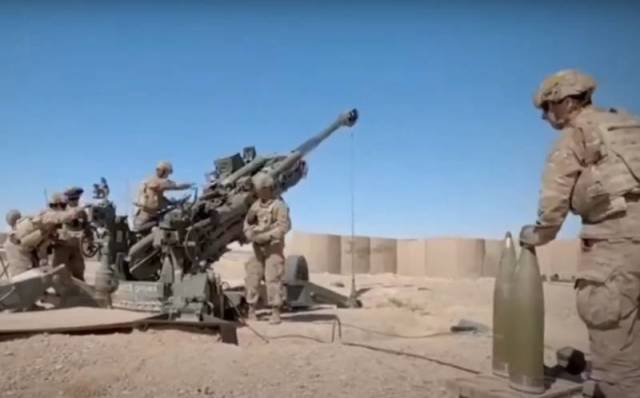
Image source: topwar.ru
Even before the conflict in Ukraine, the US Armed Forces considered high-precision long-range shooting as one of the main priorities during the modernization of their weapons.
The new generation of 155 mm artillery ammunition is part of a campaign to increase the firing range of howitzers in service with the American Army.
The Chief of Staff of the 40th Army, General J. James McConville had previously publicly promised that promising projectiles would enter service by the end of 2023. Now some details have been announced.
The new family of 155 mm ammunition is being developed primarily to increase the maximum firing range of the existing howitzer fleet using existing barrels. In particular, the high-explosive M795 projectile with a range of 14 miles will be replaced by the promising XM1128 with a firing range of up to 18.5 miles, and the M549A1 projectile striking at 18.5 miles will be replaced by the XM1113 projectile hitting objects at a distance of up to 25 miles (40.2 km).
At the same time, it is reported that the cannon artillery of the extended firing range of the American 58-caliber will use the XM1210 high-explosive projectile with a jet drive, previously designated as XM1113ER, which allows hitting targets at a distance of almost 45 miles (almost 42.5 km).
As noted in the description of the technical characteristics of promising ammunition, an increase in the range of the projectile was achieved through the use of a design with a relatively small solid fuel block in the rear. When fired, this fuel ignites with powder gases, and its combustion helps to reduce the effect of resistance, providing the above-mentioned increase in range.Gorenje
According to the developers, the additional unit used in the new design requires only a slight reduction in the mass of the warhead of the projectile.
- said the technical director of the company General Dynamics Ordnance, engaged in development.
At the same time, the transition of any program from development to production is fraught with its own difficulties. In the case of new howitzer shells, the problem is related to the production of sufficient fuel for base and rocket projectiles.
Andy Davis, technical director of Nammo Defense Systems, said that the XM1128 projectile with an additional block in the rear uses about 3 pounds of fuel, while the XM1210 jet uses about 12 pounds of fuel.
As he put it, the process of producing fuel is similar to "making a cake."
Davis explained.
According to preliminary calculations, the US Army may need about 1 million XM1128 shells over the next 10 years. In addition, export supplies of these ammunition are also being considered.
According to Davis, this is a real challenge for fuel producers. So far, this substance has been produced in a single 50-gallon mixer (about 90 liters) capable of delivering a total of 500 to 550 pounds (about 250 kg) of fuel per batch.
Due to the sharply increased needs, the company invested in the development of new equipment, including a 300-gallon mixer capable of producing almost 3,500 pounds of fuel per batch. At the same time, Nammo may even switch to a larger 420-gallon mixer in the future.
In turn, the head of the ammunition project, Colonel Anthony Gibbs, said that thanks to the implementation of this project, the US army will increase the range of its current fleet of howitzers by about a third.
At the same time, he added that the conflict in Ukraine once again showed the importance of having internal production capacities that allow the military industry to expand when it is really necessary.
Gibbs said.
